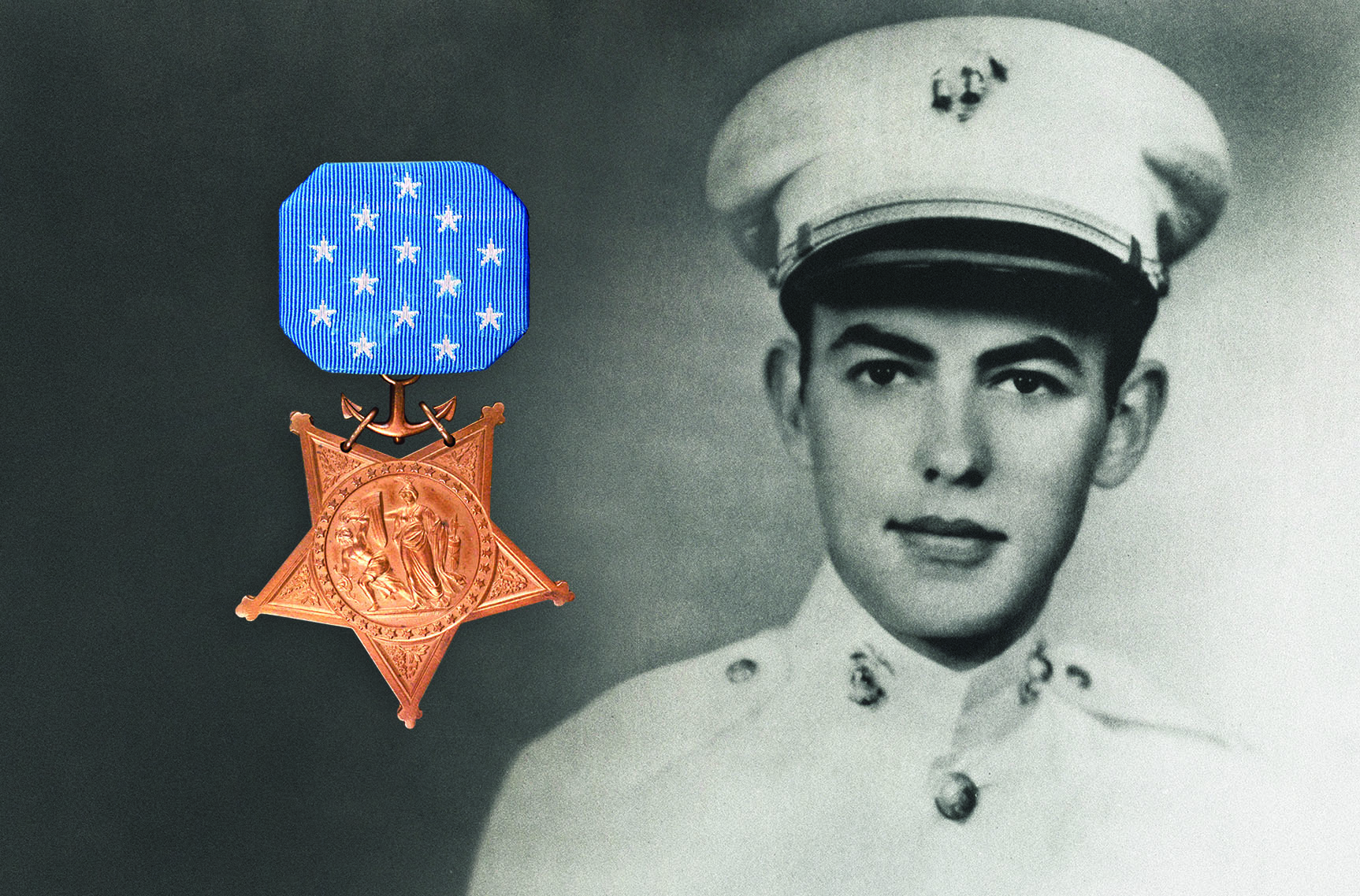In the midst of the North Pacific some 1,300 miles west of Pearl Harbor, Hawaii, U.S.-claimed Midway Atoll hosted a telegraph cable station and dockside facilities for Pan American Airways flying boats until early 1941, when the Navy began constructing an air station. After the Japanese surprise attack on Pearl Harbor on Dec. 7, 1941, the United States sent reinforcements to Midway. Formed there on March 1, 1942, Marine Aircraft Group (MAG) 22 comprised fighter squadrons VMF-221 and VMF-222 (equipped with Grumman F4F-3 Wildcats and Brewster F2A-3 Buffalo) and scout bomber squadron VMSB-241 (operating 19 Douglas SBD-2 Dauntless and 17 older Vought SB2U-3 Vindicator dive bombers). When the Battle of Midway began on June 4, 1942, it saw the last American combat use of both the Buffalo and Vindicator.
Among VMSB-241’s flight leaders was Capt. Richard Eugene Fleming. Born in St. Paul, Minn. on Nov. 2, 1917, he enlisted in the Marine Corps Reserve in 1935. In 1940 Fleming finished training at Naval Air Station Pensacola, Fla. First assigned to NAS San Diego, he transferred to Midway 10 days after the Pearl Harbor raid. He was promoted to first lieutenant in April 1942 and to captain in May.
On June 4 aircraft from the Japanese carriers Akagi, Kaga, Soryu and Hiryu pounded the Marine defenders on Midway. Already in the air, VMSB-241 counterattacked but was badly mauled by Mitsubishi A6M2 Zero fighters, losing eight SBDs. Although comparatively obsolescent, only two SB2Us were lost. Fleming reached Vice Adm. Chuichi Nagumo’s flagship, Akagi, and dove to 400 feet before dropping his 500-pound bomb, missing nevertheless. He returned to Midway with 179 bullet holes in his SB2U and minor wounds.
Later that day Navy SBD-3s from the carriers Yorktown, Enterprise and Hornet fatally damaged all four enemy carriers, though Hiryu’s planes crippled Yorktown. At 1900 hours VMSB-241 set out after a reported enemy carrier but found none.
In a last desperate attempt to turn around a losing battle, Adm. Isoroku Yamamoto ordered Cruiser Division 7, comprising Mogami, Mikuma, Suzuya and Kumano and the destroyers Asashio and Arashio, to make a night bombardment of Midway airfield. At 0255 hours on June 5, however, Yamamoto reconsidered and ordered a general retirement. At 0342 the cruisers spotted the American submarine Tambor, and as they took evasive action, Mogami collided with Mikuma, damaging both.
Later that morning six SB2Us of VMSB-241 set out to check reports of Japanese battleships west of Midway. They found none, but at 0800 hours they located Mogami and Mikuma.
Captain Bruce Prosser was behind Fleming as they made their bombing run. “It appeared to me that [Fleming’s] plane might have been hit…because it wavered uncertainly, and a puff of light-colored smoke was emitted,” Prosser recalled. “Out of the corner of my eye it appeared to me that the plane struck the aft port quarter of the Mikuma and sort of semi-cartwheeled into the sea.”
“I saw a dive-bomber dive into the last turret and start fires,” recalled Capt. Akira Soji, who witnessed the attack from Mogami. “He was very brave.”
Whether or not he’d deliberately aimed his doomed plane at the cruiser, his Vindicator ended up in the sea—not on Mikuma’s turret as popular legend has it. There is no doubting Soji’s testimony, however, as to Fleming’s courage.
On June 6 thirty-one carrier-based SBD-3s sank Mikuma, killing 650 of its crew. Another 240 were rescued by Mogami and the destroyers.
On Nov. 24, 1942, President Franklin D. Roosevelt awarded a posthumous Distinguished Flying Cross to Fleming’s rear gunner, Pfc. George A. Toms, while Fleming received the only Medal of Honor awarded to a participant in the Battle of Midway. MH
This article appeared in the January 2022 issue of Military History magazine. For more stories, subscribe and visit us on Facebook.





